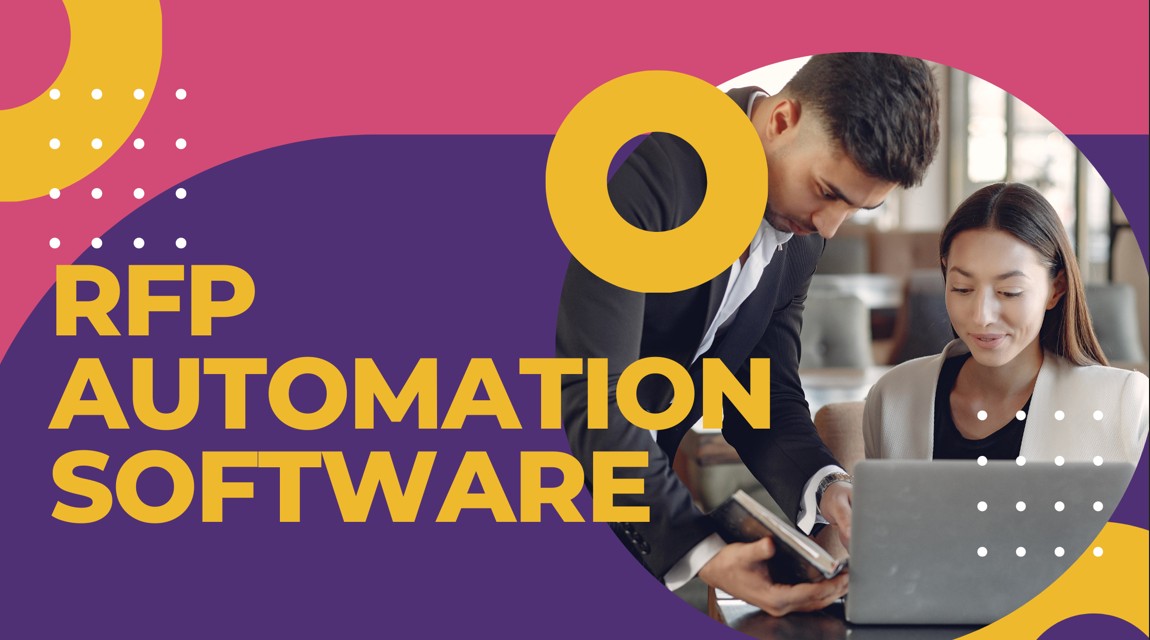Request for Proposal (RFP) processes are intricate and demanding for any business that seeks to secure new contracts and expand its services. Traditionally, these processes have involved numerous manual tasks that can be prone to human error and inefficiency. However, with advancements in technology, RFP automation is on the rise, offering robust solutions that streamline and enhance these critical activities. Understanding what RFP automation entails and how it can bolster a company’s competitive edge is pivotal in today’s fast-paced market. Below, we delve into the mechanics of RFP automation, its numerous advantages, and how it is reshaping the way companies operate.
Understanding RFP Automation and Its Benefits for Businesses

Alt text: An individual using a laptop, highlighting the advantages of RFP automation for businesses.
RFP automation streamlines how companies create, distribute, and evaluate requests for proposals by replacing slow, error-prone manual methods with smart software tools. What is RFP automation? Qvidian is one example; it helps teams draft proposals collaboratively, store templates, and track responses, cutting down on administrative work while keeping everything organized and on schedule.
Beyond saving time, RFP automation boosts accuracy and consistency. It helps ensure no key requirements are missed and allows companies to handle even large volumes of RFPs with confidence. With built-in analytics, businesses can measure the success of their proposals and improve future submissions to win more deals.
The Evolution of RFP Processes: From Manual to Automated
The RFP process has evolved from a manual, paper-based system to a streamlined, technology-driven operation. Early methods relied on physical documents and mail, which made the process slow and labor-intensive. The shift to digital RFPs improved distribution but still required significant manual effort, leaving room for delays and errors.
The introduction of RFP automation marked a major leap forward, incorporating AI and machine learning to accelerate and refine every stage of the process. Modern automated tools now enable businesses to customize and automate tasks from drafting to decision-making. These advancements not only improve efficiency but also provide a competitive edge in managing proposals more strategically and accurately.
Key Features of RFP Automation Software
RFP automation software streamlines the proposal process through essential features like template libraries, which enable quick, consistent creation of new RFPs. Real-time collaboration tools support seamless communication among stakeholders, ensuring alignment throughout the workflow. Built-in automation features guide tasks through set stages, sending alerts when team input is required, which keeps projects moving efficiently.
Robust search and content management functions allow users to access and reuse previous responses and data, reducing research time. Advanced systems often include analytics and reporting tools that offer insights into proposal performance and trends, helping teams identify strengths and areas for improvement while refining future submissions.
How RFP Automation Improves Efficiency and Accuracy

Alt text: A person focused on typing on a laptop, illustrating RFP automation’s role in enhancing efficiency and accuracy.
RFP automation transforms proposal management by streamlining workflows and eliminating manual task coordination. Automated systems ensure timely progression through each stage of the process, reducing bottlenecks and delays. The use of standardized templates and pre-filled fields helps maintain accuracy and consistency in document creation, minimizing errors and presenting a professional appearance.
This precision continues into the evaluation phase, where automated scoring systems offer objective assessments and reduce subjective bias. Clear, data-driven insights support better decision-making when selecting proposals. By reducing administrative burdens, automation allows employees to shift their focus from repetitive tasks to strategic planning and client engagement, ultimately supporting more effective use of company resources.
Choosing the Right RFP Automation Solution for Your Organization
Selecting the right RFP automation solution involves evaluating several key factors to align with organizational needs. Scalability is vital to ensure the software can handle growing RFP volumes. Seamless integration with existing systems like CRM and ERP is necessary for workflow efficiency. Customization options such as editable templates, workflows, and reporting features help the solution support unique business processes.
Support and training are crucial for smooth implementation and effective system use. Financial considerations must include both upfront costs and long-term returns, including improved proposal success rates. Understanding what RFP automation entails can help clarify the benefits and guide a more informed selection process.
Overall, RFP automation represents a significant leap forward for businesses seeking to refine and elevate their proposal processes. By enhancing efficiency and accuracy, while offering features for collaboration and strategic analysis, RFP automation software is an indispensable tool for companies looking to thrive in competitive markets. Choosing the right solution will ensure your team can capitalize on the full potential of automated RFP management.




